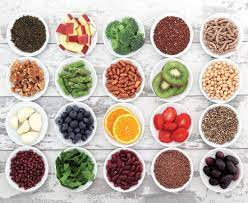Macronutrients
INTRODUCTION
In my previous post, I had mentioned macro and micronutrients but I would like us to talk and discuss macronutrients in detail for they are very essential in our body for growth and development.
some may ask what's the difference between the macronutrients and micronutrients? what benefits do macronutrients bring to the body? where do we get them from or rather their source? I will take you through all that
The difference between macronutrients and micronutrients is; macronutrients are the nutrients that are needed by the body in large amounts they are namely: carbohydrates, proteins, and fats. these provide the body with energy or calories. micronutrients are the nutrients required in small quantities or in trace amounts
macronutrients;
Carbohydrates- These are food that gives the body energy, and they include sugar, starches, and fiber
Sugars- There are different types of sugar which are simple and complex sugar
Simple sugars- They are called' bad 'sugars because they are produced commercially and added to foods to sweeten, prevent spoilage, or improve structure and texture. They are low in fiber, low in nutrients, high in kilocalories, and high in saturated fats. examples include; Corn syrup, honey, maple syrup, brown sugar, and, raw sugar, etc (this are added sugars) increased amount of these sugars may lead to obesity, heart diseases, cancer, increased risk of diabetes type 2, etc. it is recommended to take less amount of sugars.
FOODS THAT CONTAINS SIMPLE SUGARS
Complex sugars - These are the' good' sugars and they are processed slowly in the body, they are high in nutrients, high in naturally occurring fiber, low or moderate in kilocalories, free from refined sugar. These sugars are found in foods like peas, beans, whole grains, and vegetables. They help in the cells of the body and also the brain.
FOODS THAT CONTAINS COMPLEX SUGARS
Dietary Fibre -This is the portion of plant-derived food that cannot be completely digested or broken down by the body enzymes responsible for digestion. dietary fiber can be soluble, have viscosity, and fermentability and this determines how fiber is processed in the body. Dietary fiber has two main components: soluble fiber and insoluble fiber, which are sourced from plant foods, such as legumes, whole grains, cereals, vegetables, fruits, nuts, etc. A diet high in dietary fiber consumption is generally associated with supporting health and lowering the risk of various diseases.
soluble fibre-This is also called fermentable/prebiotic fiber, it does not dissolve in water. Fermentation occurs in the colon where the fiber is turned into gases and physiologically active by-products like short-chain fatty acid produced in the colon by gut bacteria. eg are oats, barley, etc.
Insoluble fiber- These are insoluble fibers. This helps in triggering the secretion of mucus in the large intestine providing bulk. An example is wheat bran
FOODS THAT CONTAINS DIETARY FIBRE
Starches- It is made of many glucose units joined by chemical bonds. It is the most common carbohydrate in human diets. Pasta, potatoes, bread, and other starchy foods are made out of carbohydrates.
PROTEINS-This are building blocks of amino acids that help in building muscle mass. There are different types of protein which are; plant and animal proteins.
- building; Protein is an important building block of bones, muscles, cartilage and skin. For example, your hair and nails are comprised mostly of protein.
- Repair. The body uses it to build and repair worn-out tissue.
- Oxygenate. Red blood cells contain a protein compound that carries oxygen throughout the body. which helps supply your entire body with the nutrients it needs.
- Digestion. About half the dietary protein that you consume each day goes into making enzymes, which helps in digestion and making new cells and body chemicals.
- Regulation. Protein plays an important role in hormone regulation, example during the transformation and development of cells in puberty.






Comments
Post a Comment
thank you